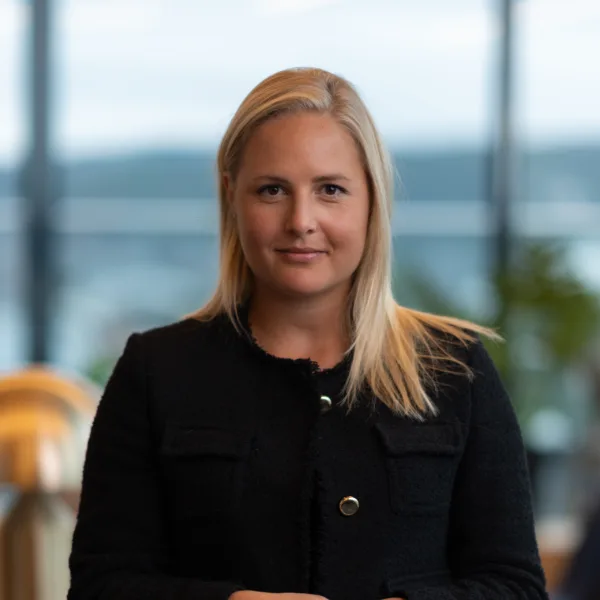WR Asset Management: Consultation on the Implementation of AIFMD II in Norwegian law

On 8 October 2025, the Ministry of Finance submitted a consultation memo from the Norwegian Financial Supervisory Authority ("NFSA") on the implementation of Directive (EU) 2024/927 ("AIFMD II") in Norwegian law. AIFMD II amends both the AIFMD and the UCITS Directive, but the bulk of the changes relate to AIFMD.
Reading time 14 minutes
The purpose of the revised directive is to achieve increased harmonisation, more efficient operations and enhanced investor protection, while the regulations also permit lending from AIFs and expand the scope of activities for managers. In the EU, the rules apply from 16 April 2026, with reporting requirements from 16 April 2027.
AIFMD II represents an expansion of its predecessor, the AIFMD (Alternative Investment Fund Managers Directive) from 2011, which was implemented in Norwegian law through the AIF Act in 2014. The changes are extensive and will require Norwegian managers to adapt operationally, legally and commercially. This newsletter provides an overview of the most important changes and the practical consequences for Norwegian market participants.
Lending – (almost) new asset class in Norway
One of the most significant new features of AIFMD II is the introduction of loan originating funds as part of the manager's activities, with new, detailed rules on credit processes, risk management, concentration limits, leverage, prohibition on originate-to-distribute and requirements for risk retention on sale. This represents a significant expansion of the investment universe and provides Norwegian managers with the opportunity to compete in a market that has traditionally been dominated by banks and credit funds established in other jurisdictions.
Until now, loans as an investment strategy for funds in the Norwegian market have in practice been reserved for specially regulated fund types at EU level, particularly ELTIF and EuVECA.
The NFSA considers that commencing lending activities for existing managers will constitute a material change that must be notified to the NFSA.
Organisational requirements and credit processes
The regulations set out strict requirements for organisation and management. Managers must establish documented, annual processes for granting loans, credit rating assessment, administration and monitoring. In practice, this means that managers who wish to engage in f loan originating activities must build up a credit function with sufficient expertise, systems and control mechanisms.
Loans originated to a single counterparty that is a financial institution, AIF or UCITS may not exceed 20 per cent of the fund's capital. If the threshold is exceeded, the fund must bring the exposure back below the threshold within a specified period. The concentration limits are intended to ensure sufficient diversification and limit counterparty risk.
Fund structure and leverage
As a general rule, loan originating funds must be closed-ended, but may also be open-ended if the manager can document sufficiently robust liquidity management. Leverage is limited to 175 per cent for open-ended funds and 300 per cent for closed-ended funds. The reasoning is that loans are typically illiquid assets which are not suitable for open-ended structures with ongoing redemption rights. For managers who nevertheless wish to establish open-ended loan originating funds, it will be decisive to establish and design a liquidity management system adapted to the liquidity offered in the fund, including the appropriate choice and design of the fund's liquidity management tools. See more about such tools in section 4 below.
Requirement for a long-term approach to investments
When selling loans, the fund must retain at least five per cent of the nominal value until maturity for loans with a term of up to eight years, or for at least eight years for other loans, with limited exceptions. This requirement is intended to ensure that the fund has incentives to make thorough drift credit assessments and not just "originate to distribute".
Gold-plating
The directive grants member states discretion to exercise national options in certain areas. Member states may prohibit lending to consumers, and the NFSA proposes such a prohibition in Norway. The draft bill introduces a ban on consumer loans, lending to managers, depositaries, outsourcers or affiliated entities, and prohibits strategies based on the resale of loans ("originate-to-distribute" models). This means that Norwegian loan originating funds will be restricted to lending to commercial and professional market participants.
Framework conditions
The Norwegian taxation of interest income may dampen interest in loan originating funds established in Norway. For this asset class, tax conditions will be an important factor in structuring individual funds. However, certain investors and fund types (particularly funds with a fixed income component and certain insurance and pension investors) will be less sensitive to the disadvantages of Norwegian taxation of interest income in funds.
The NFSA expects that lending from AIFs will, in the foreseeable future, be very modest in volume compared to the bank and bond markets - the framework conditions may explain this limited uptake.
Marketing to non-professionals - stricter main rule, new openings
The rules for marketing to non-professional investors are changed significantly. AIF units can no longer be offered to non-professionals without a marketing authorisation – the threshold is moved from "marketing" to "offering", which in practice eliminates the possibility of "reverse solicitation". At the same time, a new category of qualified non-professional investors is proposed to be introduced, as well as clarification regarding investment by employees of the manager.
Elimination of reverse solicitation for non-professional investors - a practical clampdown
Under the current regime, managers have been permitted to accept subscriptions from non-professional investors who, on their own initiative and without any prior marketing, have wished to subscribe to a fund - as the restriction has related to marketing towards non-professionals. This practice (often referred to as "reverse solicitation" or passive sales) has been an important source of capital for many managers, especially smaller and start-up entities.
The new wording means that managers cannot "offer" units to non-professional investors without special authorisation, regardless of who initiated the contact. In practice, this means that even if an investor approaches a manager and asks to invest, the manager will not be able to accept this without having a marketing authorisation. This represents a significant limitation compared to the current regime and means that many managers will have to apply for authorisation or restrict their funds to professional investors only.
The reason for the change is that the NFSA has observed that registered managers have often had a significant proportion of non-professional investors in their funds, and that the current regulations have not provided sufficient investor protection. At the same time, the change raises practical questions that are not fully clarified in the consultation paper. For example, it is unclear what exactly is meant by "offering" units, including whether it constitutes a pure subscription ban, and whether the ban is also intended to include foreign funds that do not actively direct their activities towards Norway. A key prerequisite behind the principle of reverse solicitation on a cross-border basis - which is considered a principle and has been codified in a number of areas of EU/EEA financial law - is that a foreign entity is not considered to provide services in Norway if they do not market the service in Norway, but the Norwegian investor contacts the entity on their own initiative. The proposal seemingly has extraterritorial as well as negative effects, both for Norwegian investors and for foreign management environments, and it could also be problematic under EU law. Such a restriction may be contrary to EU law if it also applies to foreign managers, while if it only applies to Norwegian managers, it will be a competition-distorting restriction where foreign funds can carry out passive sales to Norwegian non-professionals, while Norwegian managers are restricted.
New category: qualified non-professional investors
Norway has previously operated with two main investor categories in the fund area: professional and non-professional investors. AIFMD II introduces a third category, so-called "qualified non-professional investors". This category encompasses investors who invest at least EUR 100,000 and sign a declaration of risk understanding. AIF managers receive regulatory relief in the form of no suitability assessment or special language requirements, but must still obtain a marketing authorisation and provide a PRIIPs document. This provides a new channel for distribution to experienced private investors and family capital, with a somewhat lighter regime than for ordinary non-professional investors. There will also be a simplified application process for marketing authorisation to qualified non-professional investors, as there is an exemption from the requirement to explain how marketing and sales are conducted.
Employees and co-investments
It is also proposed that employees of AIF managers may be offered units in the fund without a marketing authorisation, provided that they "participate in the management" of the fund in question. For employees who fall outside this definition, the investment opportunity in the fund will be limited to situations where they qualify as professional investors or where the fund is authorised for marketing to non-professionals.
Employees' access to invest in the manager's fund is often an important element of the manager's incentive structure. Investors will normally also expect or demand that specific employees invest in the fund and thus have their "skin in the game". However, the consultation paper does not provide a clear definition or explanation of which employees shall be considered to "participate" in the management of the fund, beyond stating that it does not apply to every employee. The reason for the exception is that employees of the manager who participate in the management of the fund generally must be considered to have an understanding of the risks associated with an investment in the fund in question. It must be assumed that persons in key functions at the manager will possess such knowledge, including the portfolio managers, the risk management function, legal, compliance and the distribution team.
It will also remain possible to establish employee participation schemes for investing in the fund, in accordance with the exemption under section 1-3(1) of the AIF Act.
Employees in portfolio companies
A new opening under AIFMD II is that employees of companies in which the fund is "predominantly" invested may be offered fund units as part of an employee investment programme, without the manager needing a marketing authorisation for non-professionals. The condition is that the fund is "predominantly" invested in the target company, and that units are subscribed as part of employee savings schemes or employee participation schemes. This recognises that employees of portfolio companies have a particular connection to and understanding of the investment, and that co-investment can be an important incentive to retain key personnel in the company through a change of ownership.
The flexibility is well-received, but is unlikely to have major practical consequences given how most employee investment schemes are currently structured.
Outsourcing and "fund hotels" - stricter reporting and clearer boundaries
The rules on outsourcing are being made both stricter and expanded. The rules cover all functions in Annex I of the Directive (portfolio management, risk management and various forms of administrative services for the fund, marketing and services related to the funds' assets) and investment services (top-up MiFID services), including individual portfolio management and investment advice. All such outsourcing must now be notified to the Financial Supervisory Authority of Norway prior to implementation, while the special Norwegian 60-day deadline for notification of outsourcing of tasks related to investment services is abolished.
Demarcation against distribution
The extent to which the manager is responsible for any sale of units in an AIF has been the subject of discussion. AIFMD II clarifies that marketing through independent distributors acting on their own responsibility shall not be considered as outsourcing. This clarifies the relationship between manager and distributor and ensures that distributors acting independently are not subject to unnecessarily strict requirements.
New requirements for "fund hotels" and "white label" structures
New requirements for documentation and reporting of conflicts of interest are introduced for so-called "fund hotels" or "white label" structures where funds are established on the initiative of a third party. This will ensure that the NFSA has sufficient insight into such structures and can assess whether conflicts of interest are handled properly.
Increased reporting requirements
New detailed periodic reporting requirements on outsourcing will be introduced, including requirements regarding counterparty, scope, resources, due diligence and sub-delegation. This will require managers to establish systems to collect and report this information in a structured manner.
Liquidity management tools - mandatory toolkit for open-ended funds
The liquidity management tools available to managers of open-ended AIFs have not been subject to detailed regulation in AIFMD. AIFMD II sets out nine tools, including suspension, limited redemption, notice period, fees, swing and two-tier pricing, anti-dilution, distribution in kind and side pockets. Each open-ended fund must select at least two tools from the list (between no. 2-8), and always have access to suspension and side pockets. This will give managers better opportunities to handle redemptions in the event of weakened liquidity or other negative events, while also protecting remaining investors.
Distribution in kind can only be used for professional investors and as a starting point on a pro rata basis. The choice of tool is specified in the fund agreement/foundation documents, with procedures for activation/deactivation and notification to the NFSA of choices and procedures. Activation/deactivation outside of ordinary operations must be reported, and the NFSA may order the use of tools in the event of risks to investor protection or financial stability.
For UCITS, AIFMD II introduces a change by removing the requirement for prior consent from the NFSA for the suspension of redemptions. The decision may be made by the manager, subject to subsequent supervisory control. This provides greater flexibility in crisis situations, but also requires that the decision is properly justified and documented.
All managers with open-ended funds must review existing funds to select suitable tools, establish thresholds and management procedures, update fund rules and prospectuses, and establish procedures for notification and communication when using the tools.
Reporting and information requirements - expanded requirements and increased transparency
AIFMD II introduces an expansion of reporting and information requirements for both investors and supervisory authorities.
Investor information
Pre-contractual information must specify the likelihood and conditions for the use of liquidity management tools and provide a complete overview of fees. Furthermore, periodic reporting is proposed to be expanded to include loan portfolio composition, total costs and use of SPVs/group structures. This will provide investors with a better basis for assessing risk and costs before investing, and enhanced insight into the fund's development over time.
Supervisory reporting
AIFs and UCITS will be required to report on markets and instruments (not just the ''most important"), risk profile, stress tests, outsourcing (in detail) and marketing countries; ESMA standards are due by 16 April 2027. This represents a significant expansion of the reporting obligation and will require managers to invest in systems and processes for data collection and reporting. Dual authorisation does not imply double reporting; the obligation follows the fund type, which provides some simplification for managers
Organisation and custody
Management requirements
Requirements are introduced for managers' management structure, which must consist of at least two full-time employees who are resident in the EEA. This requirement applies as an absolute minimum, regardless of the size or complexity of the manager, and may entail adjustments particularly for the smallest managers.
Depositary rules
AIFMD II contains a national option permitting depositaries in other EEA countries to provide services for funds established in that Member State. The NFSA proposes that this option should not be utilised and that the current rules should be maintained. This means that Norwegian funds must continue to have a Norwegian depositary, while Norwegian managers who establish funds in other EEA countries can use a depositary in the host country if permitted there.
Expanded scope of operations - new services and cleanup
AIFMD II entails an expansion of the activities that managers can perform, while also simplifying the authorisation regime in several areas. Among other things, lending on behalf of AIFs and services to securitisation firms will be permitted functions. Managers can also apply for authorisation for benchmark management, though to prevent conflicts of interest, it will not be permitted to manage benchmarks used by their own funds, which will probably limit the practical relevance of this opportunity. Moreover, it is proposed to open up for credit servicing activities in line with the Non-Performing Loans Directive, but this will not apply with regard to consumers in Norway.
Third-party services – new revenue stream
An interesting innovation is that managers can offer third parties (i.e. parties other than funds under management) functions and additional services that the manager already performs for its own funds, provided that conflicts of interest are managed. This allows managers to commercialise their infrastructure and expertise by offering services such as IT systems, risk management tools, administrative support functions and other services to other managers or market participants. This provides managers with the opportunity to scale their operating model and create new revenue streams.
Simplifications in the authorisation regime
The requirement to have authorisation for active management in order to provide investment advice and other ancillary services is abolished. For UCITS managers, the changes mean that they can now also offer reception and transmission of orders as an ancillary service - an activity that AIF managers have already had access to under the current regime. This contributes to increased harmonisation between the two types of managers.
The changes thus simplify the authorisation regime and provide smaller managers with better opportunities to offer a wider range of services. MiFID II references are updated and clarify that MiFID requirements apply when the service involves financial instruments.
Timeline for implementation
In the EU, the rules apply from 16 April 2026, with reporting requirements from 16 April 2027. For Norway, the timeline is more uncertain. The consultation deadline is 9 January 2026, and in a best-case scenario, this could lead to a legislative proposal in April 2026 with entry into force on 1 July 2026.
However, there is a risk of delays in both the EEA process and the Norwegian legislative process. As AIFMD II aims to ensure increased harmonisation and more efficient operations across the EEA, a significant delay in Norwegian implementation could create competitive disadvantages for Norwegian market participants - particularly regarding new opportunities such as lending and loan origination activities, third-party services and distribution to qualified non-professional investors. Nevertheless, we recommend that asset managers plan as if the regulations will come into force in summer 2026 and commence gap analysis and preparations now.
WR takeaways
AIFMD II represents the most comprehensive change to the regulatory framework for alternative investment funds since the introduction of AIFMD in 2011. The changes provide Norwegian managers with new opportunities, particularly in lending, third-party services and distribution to qualified non-professional investors, while simultaneously making the requirements for organisation, governance and reporting significantly more stringent. Restrictions on reverse solicitation to non-professional investors may make raising capital more difficult for start-up asset management organisations.
Our recommendations to Norwegian asset managers:
- Start planning now. Although the regulations are unlikely to come into force until H2 2026, implementation will require time and resources. Conduct a gap analysis, identify necessary changes and establish an implementation plan with clear milestones.
- Consider the commercial opportunities. AIFMD II opens up for new business models and revenue streams. Consider whether lending, third-party services or distribution to qualified non-professional investors might be relevant focus areas.
- Invest in systems and expertise. The expanded reporting and disclosure requirements will require upgraded systems and processes. Asset managers that invest early in robust solutions will gain a competitive advantage.
- Ensure proper management of new activities. For managers considering establishing loan originating funds or offering new services, it is crucial to establish robust frameworks for risk management, conflict of interest management and compliance from the outset.





